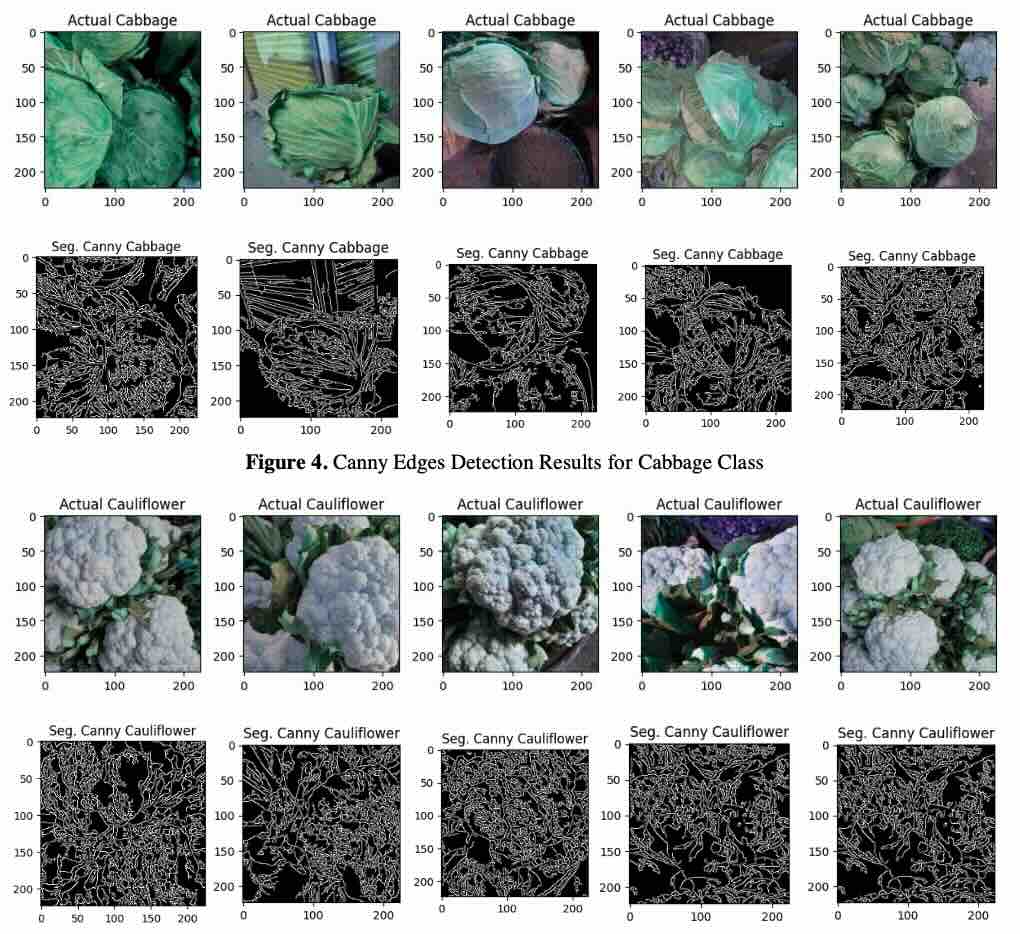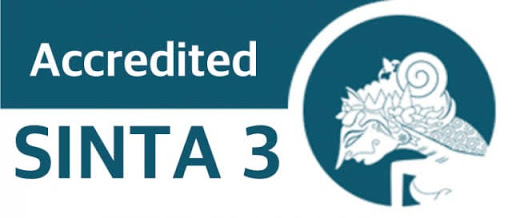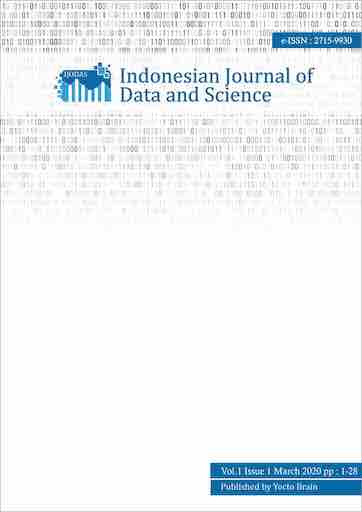Advancements in Agricultural Automation: SVM Classifier with Hu Moments for Vegetable Identification
DOI:
https://doi.org/10.56705/ijodas.v5i1.123Keywords:
Support Vector Machine, Hu Moments, Vegetable Classification, Image Segmentation, Agricultural Automation, Feature Extraction, Machine LearningAbstract
This study investigates the application of Support Vector Machine (SVM) classifiers in conjunction with Hu Moments for the purpose of classifying segmented images of vegetables, specifically Broccoli, Cabbage, and Cauliflower. Utilizing a dataset comprising segmented vegetable images, this research employs the Canny method for image segmentation and Hu Moments for feature extraction to prepare the data for classification. Through the implementation of a 5-fold cross-validation technique, the performance of the SVM classifier was thoroughly evaluated, revealing moderate accuracy, precision, recall, and F1-scores across all folds. The findings highlight the classifier's potential in distinguishing between different vegetable types, albeit with identified areas for improvement. This research contributes to the growing field of agricultural automation by demonstrating the feasibility of using SVM classifiers and image processing techniques for the task of vegetable identification. The moderate performance metrics emphasize the need for further optimization in feature extraction and classifier tuning to enhance classification accuracy. Future recommendations include exploring alternative machine learning algorithms, advanced feature extraction methods, and expanding the dataset to improve the classifier's robustness and applicability in agricultural settings. This study lays a foundation for future advancements in automated vegetable sorting and quality control, offering insights that could lead to more efficient agricultural practices.
Downloads
References
X. Ye, “Prediction of Breast Cancer of Women Based on Support Vector Machines,” ACM Int. Conf. Proceeding Ser., pp. 780–784, 2020, doi: 10.1145/3443467.3443853.
D. Mahapatra, “Handwritten Character Recognition Using KNN and SVM Based Classifier over Feature Vector from Autoencoder,” Commun. Comput. Inf. Sci., vol. 1240, pp. 304–317, 2020, doi: 10.1007/978-981-15-6315-7_25.
S. Markkandan, “SVM-based compliance discrepancies detection using remote sensing for organic farms,” Arab. J. Geosci., vol. 14, no. 14, 2021, doi: 10.1007/s12517-021-07700-4.
A. Binbusayyis, “Unsupervised deep learning approach for network intrusion detection combining convolutional autoencoder and one-class SVM,” Appl. Intell., vol. 51, no. 10, pp. 7094–7108, 2021, doi: 10.1007/s10489-021-02205-9.
F. Wu, C. Lin, and R. Weng, “Probability Estimates for Multi-Class Support Vector Machines by Pairwise Coupling,” J. Mach. Learn. Res., vol. 5, pp. 975–1005, 2004, doi: 2880986.
S. S. Gornale, “Automatic Detection and Classification of Knee Osteoarthritis Using Hu’s Invariant Moments,” Front. Robot. AI, vol. 7, 2020, doi: 10.3389/frobt.2020.591827.
Y. Jusman, “Classification System for Leukemia Cell Images based on Hu Moment Invariants and Support Vector Machines,” Proc. - 2021 11th IEEE Int. Conf. Control Syst. Comput. Eng. ICCSCE 2021, pp. 137–141, 2021, doi: 10.1109/ICCSCE52189.2021.9530974.
J. Sun, H. Li, H. Fujita, B. Fu, and W. Ai, “Class-imbalanced dynamic financial distress prediction based on Adaboost-SVM ensemble combined with SMOTE and time weighting,” Inf. Fusion, vol. 54, pp. 128–144, Feb. 2020, doi: 10.1016/j.inffus.2019.07.006.
X.-Y. Wang, B.-B. Zhang, and H.-Y. Yang, “Active SVM-based relevance feedback using multiple classifiers ensemble and features reweighting,” Eng. Appl. Artif. Intell., vol. 26, no. 1, pp. 368–381, Jan. 2013, doi: 10.1016/j.engappai.2012.05.008.
J. S. S. Adapala, “Breast Cancer Classification using SVM and KNN,” Proceedings of the 2023 2nd International Conference on Electronics and Renewable Systems, ICEARS 2023. pp. 1617–1621, 2023, doi: 10.1109/ICEARS56392.2023.10085546.
M. Khushi, “A Comparative Performance Analysis of Data Resampling Methods on Imbalance Medical Data,” IEEE Access, vol. 9, pp. 109960–109975, 2021, doi: 10.1109/ACCESS.2021.3102399.
K. A. N. Pelliza, “Analysis of the efficiency of the adaptive canny method for the detection of icebergs at open sea,” Int. Arch. Photogramm. Remote Sens. Spat. Inf. Sci. - ISPRS Arch., vol. 42, no. 3, pp. 459–464, 2020, doi: 10.5194/isprs-archives-XLII-3-W12-2020-459-2020.
D. N. Lohare, “Comparative Study of Prewitt and Canny Edge Detector Using Image Processing Techniques,” Adv. Intell. Syst. Comput., vol. 1187, pp. 705–713, 2021, doi: 10.1007/978-981-15-6014-9_86.
K. Benhamza, “Canny edge detector improvement using an intelligent ants routing,” Evol. Syst., vol. 12, no. 2, pp. 397–406, 2021, doi: 10.1007/s12530-019-09299-0.
J. Trivedi, “Canny edge detection based real-time intelligent parking management system,” Sci. J. Silesian Univ. Technol. Ser. Transp., vol. 106, pp. 197–208, 2020, doi: 10.20858/sjsutst.2020.106.17.
J. Kuzmic, “Comparison between Filtered Canny Edge Detector and Convolutional Neural Network for Real Time Lane Detection in a Unity 3D Simulator,” Int. Conf. Internet Things, Big Data Secur. IoTBDS - Proc., vol. 2021, pp. 148–155, 2021, doi: 10.5220/0010383701480155.
Y. Jusman, “Machine Learnings of Dental Caries Images based on Hu Moment Invariants Features,” Proc. - 2021 Int. Semin. Appl. Technol. Inf. Commun. IT Oppor. Creat. Digit. Innov. Commun. within Glob. Pandemic, iSemantic 2021, pp. 296–299, 2021, doi: 10.1109/iSemantic52711.2021.9573208.
S. AbuRass, “Enhancing Convolutional Neural Network using Hu’s Moments,” Int. J. Adv. Comput. Sci. Appl., vol. 11, no. 12, pp. 130–137, 2020, doi: 10.14569/IJACSA.2020.0111216.
B. P. Sari, “Classification System for Cervical Cell Images based on Hu Moment Invariants Methods and Support Vector Machine,” 2021 Int. Conf. Intell. Technol. CONIT 2021, 2021, doi: 10.1109/CONIT51480.2021.9498353.
A. I. Maghsoodi, “A machine learning driven multiple criteria decision analysis using LS-SVM feature elimination: Sustainability performance assessment with incomplete data,” Eng. Appl. Artif. Intell., vol. 119, 2023, doi: 10.1016/j.engappai.2022.105785.
T. Cuong-Le, “An efficient approach for damage identification based on improved machine learning using PSO-SVM,” Eng. Comput., vol. 38, no. 4, pp. 3069–3084, 2022, doi: 10.1007/s00366-021-01299-6.
X. Tian, “Predicting non-uniform indoor air quality distribution by using pulsating air supply and SVM model,” Build. Environ., vol. 219, 2022, doi: 10.1016/j.buildenv.2022.109171.
P. Manoharan, “SVM-based generative adverserial networks for federated learning and edge computing attack model and outpoising,” Expert Syst., 2022, doi: 10.1111/exsy.13072.
K. Nidhul, “Enhanced thermo-hydraulic performance in a V-ribbed triangular duct solar air heater: CFD and exergy analysis,” Energy, vol. 200, 2020, doi: 10.1016/j.energy.2020.117448.
A. Das, “Assessment of peri-urban wetland ecological degradation through importance-performance analysis (IPA): A study on Chatra Wetland, India,” Ecol. Indic., vol. 114, 2020, doi: 10.1016/j.ecolind.2020.106274.
N. Rismayanti, A. Naswin, U. Zaky, M. Zakariyah, and D. A. Purnamasari, “Evaluating Thresholding-Based Segmentation and Humoment Feature Extraction in Acute Lymphoblastic Leukemia Classification using Gaussian Naive Bayes,” Int. J. Artif. Intell. Med. Issues, vol. 1, no. 2, 2023, doi: 10.56705/ijaimi.v1i2.99.
A. Naswin and A. P. Wibowo, “Performance Analysis of the Decision Tree Classification Algorithm on the Pneumonia Dataset,” … Artif. Intell. Med. …, 2023, doi: 10.56705/ijaimi.v1i1.83.

Downloads
Published
Issue
Section
License
Authors retain copyright and full publishing rights to their articles. Upon acceptance, authors grant Indonesian Journal of Data and Science a non-exclusive license to publish the work and to identify itself as the original publisher.
Self-archiving. Authors may deposit the submitted version, accepted manuscript, and version of record in institutional or subject repositories, with citation to the published article and a link to the version of record on the journal website.
Commercial permissions. Uses intended for commercial advantage or monetary compensation are not permitted under CC BY-NC 4.0. For permissions, contact the editorial office at ijodas.journal@gmail.com.
Legacy notice. Some earlier PDFs may display “Copyright © [Journal Name]” or only a CC BY-NC logo without the full license text. To ensure clarity, the authors maintain copyright, and all articles are distributed under CC BY-NC 4.0. Where any discrepancy exists, this policy and the article landing-page license statement prevail.














